Mines, ghost towns, and burros
I am not sure of the difference between a donkey and a burro. Normally, I’d pounce on my keyboard, Google-search a few key words, and know the answer in three minutes. But here in burro-land, alas my “reference library” is inaccessible. Since the BLM calls them “burros”, so will I for the time being.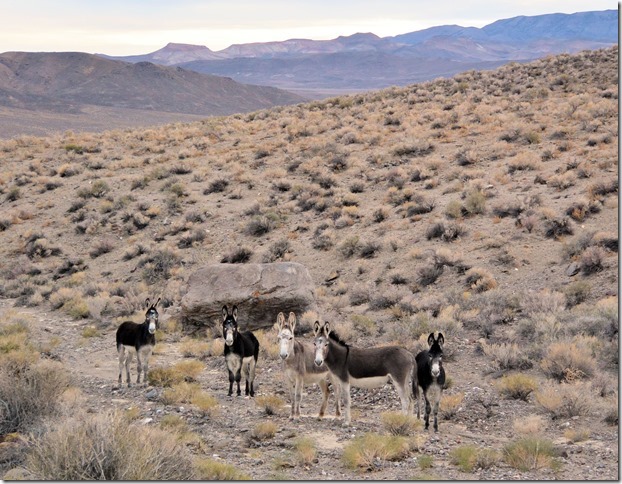
We see a few during the daytime, but most often in the late-afternoon hours as daylight is waning. They are universally curious, always facing us (and therefore the camera), but keeping a wary distance. Today, we had enough “burro shots” stored away to do some experiments, so I got out of the truck and approached them on foot. They weren’t thrilled about that, and about 50 yards was the “Stranger! Danger!” limit. But as soon as they retreated a bit, as long as I was not walking directly toward them, they were again content to stand and watch me. Karin and I discussed whether people tended to feed them – possible, but not conclusive. They were neither pesky beggars nor skittish wild game.
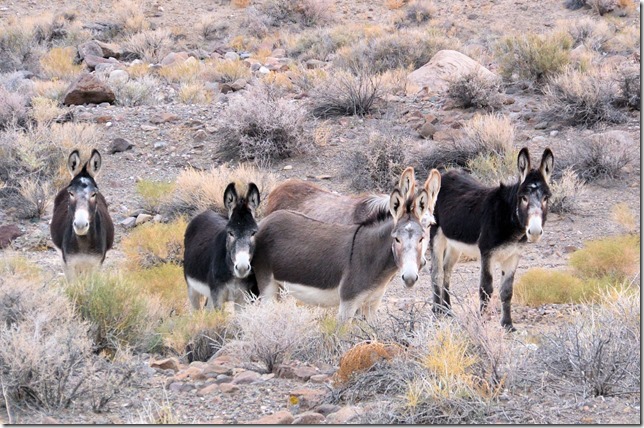
We spent only a few hours out-and-about today, but saw so many interesting sights and desert features, I feel frustrated in being able to share only a few here. Of every photo in a blog post, there are 20 more that space just doesn’t accommodate.
The first leg of the day’s exploration went down through a nearby valley, filled with a dry salt marsh and some low sand dunes. Wind-rippled dunes, virga falling over distance peaks, critter-tracks retreating from our approach – a typical desert landscape.
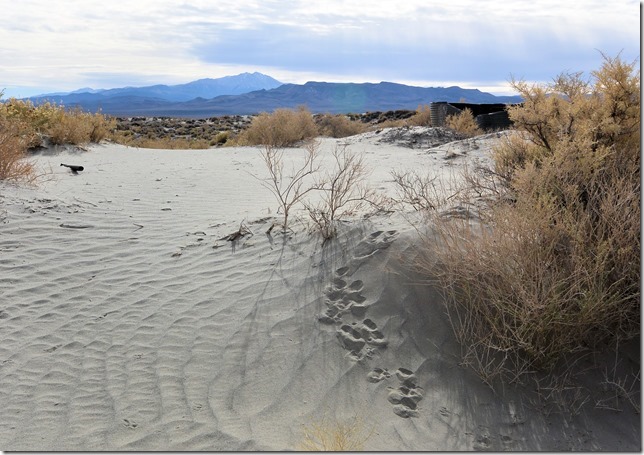
Nobody ever gets rid of anything in the desert – there’s nowhere to take it, and it’s way too much work to bury it. So stuff just sits. For decades. Here’s a nice old jalopy that just needs a little TLC. “Opa can fix anything”, my grandkids tell me – but this is a bit past my limits.
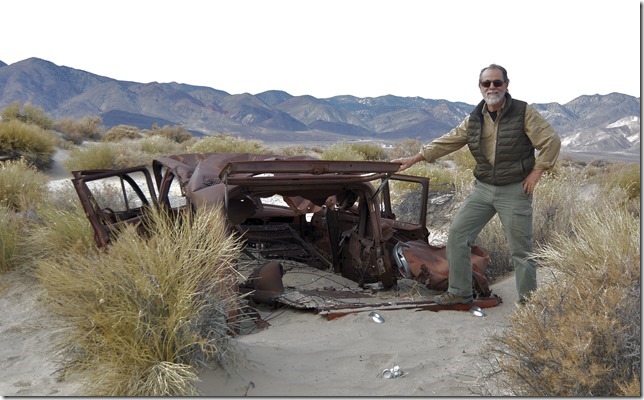
Burro and bighorn sheep highway
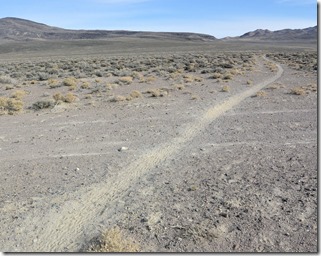
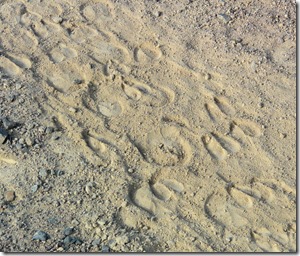
Baby burro and mama burro footprints
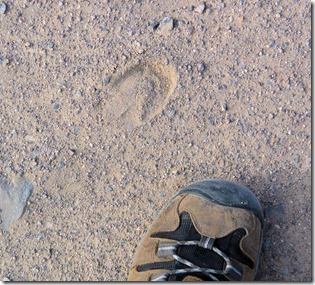
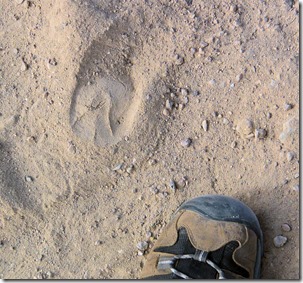
Remains of the post office and general store at Candelaria. (More info, see http://en.wikipedia.org/wiki/Candelaria,_Nevada).
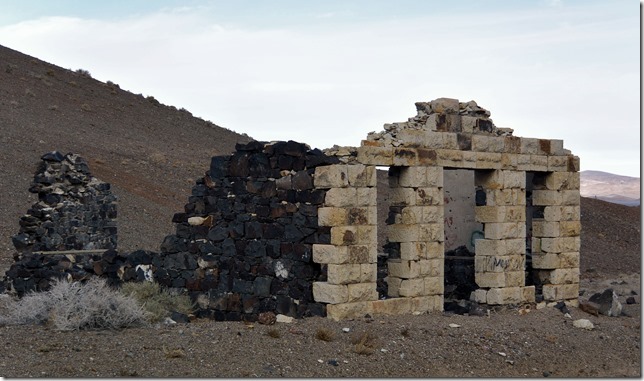
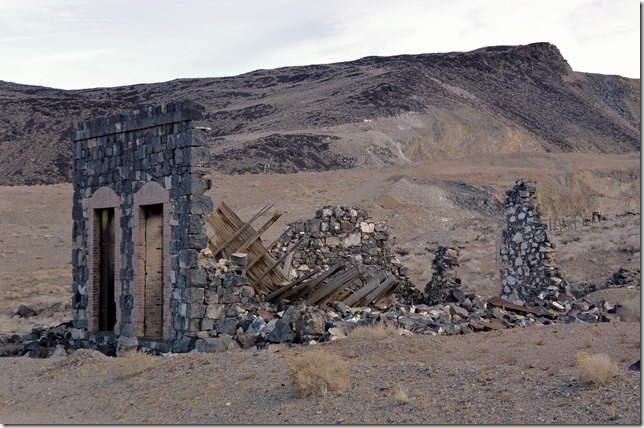
There are always some bitterly sad stories in frontier graveyards. The epitaph on this stone commemorates a seven-year-old girl, saying “A little flower of love that blossomed but to die”.
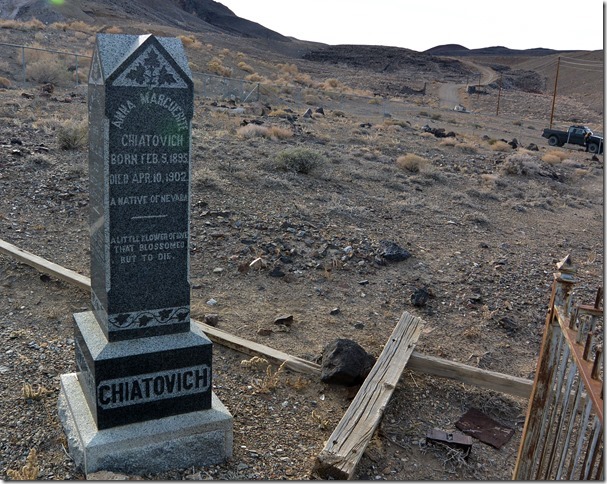
Candelaria area outlying mine, and nearby miner’s shack (roofless now).
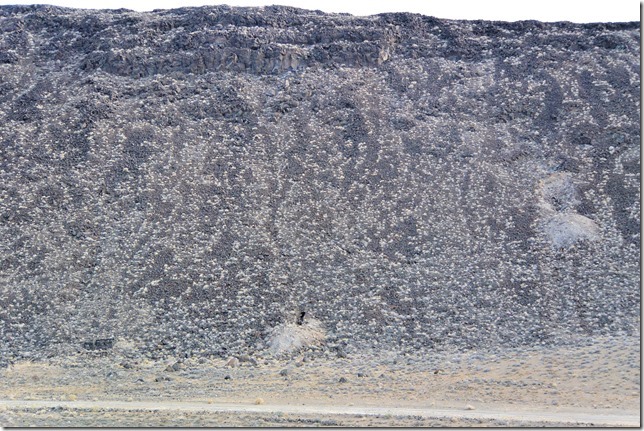
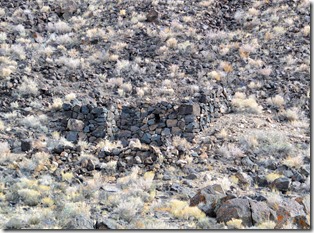
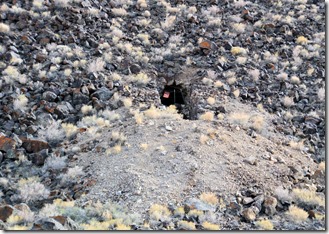
The big mine in Candelaria, a large open-pit affair with a half-square-mile of nearby tailing piles. The horizontal lines are terrace levels; half the mountain has been dug away in the search for gold ore.
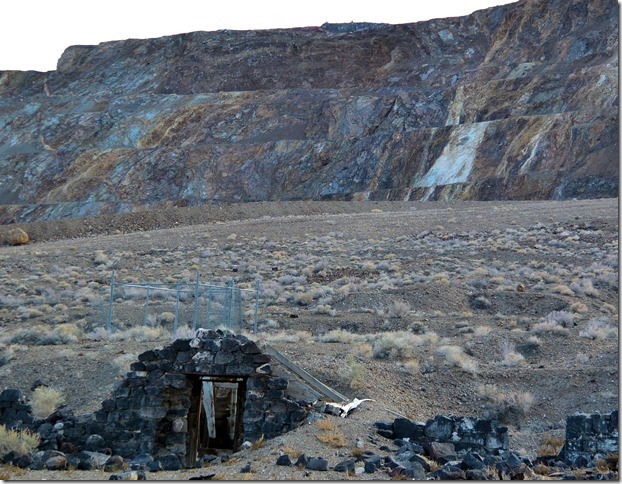
The desert is filled with surprising examples of ingenuity and pragmatism. Here is a railroad car tank transport, slung up on crossed rail ties, as a 100,000-gallon water reserve. Another smaller tank is flame-cut lengthwise to provide a cattle watering trough. A chopped-off section of fire-hose provides the filler for the tank – presumably from trucked-in water, since there was no sign of a well or pumping equipment. Waiting for dissection is yet another tank, likely the source of two more cattle troughs.
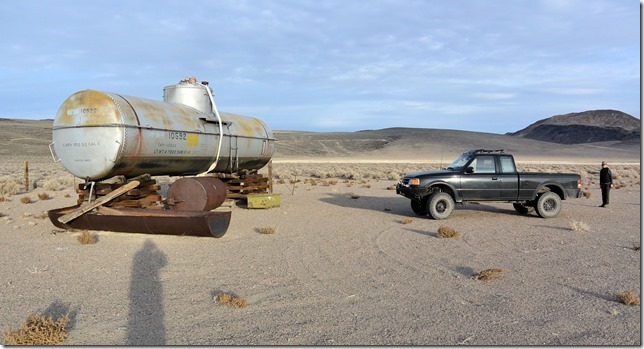
Back at camp, the desert, as it does so often, tenders a wonderful evening gift.
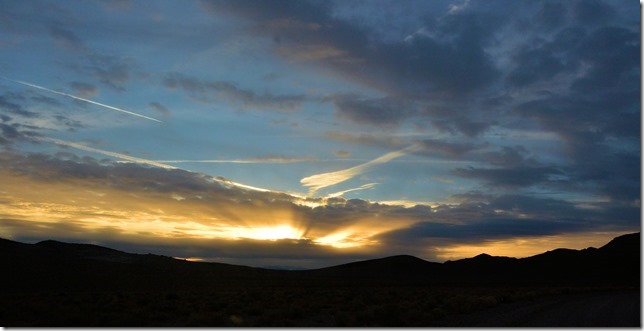
Comments
Mines, ghost towns, and burros — No Comments
HTML tags allowed in your comment: <a href="" title=""> <abbr title=""> <acronym title=""> <b> <blockquote cite=""> <cite> <code> <del datetime=""> <em> <i> <q cite=""> <s> <strike> <strong>